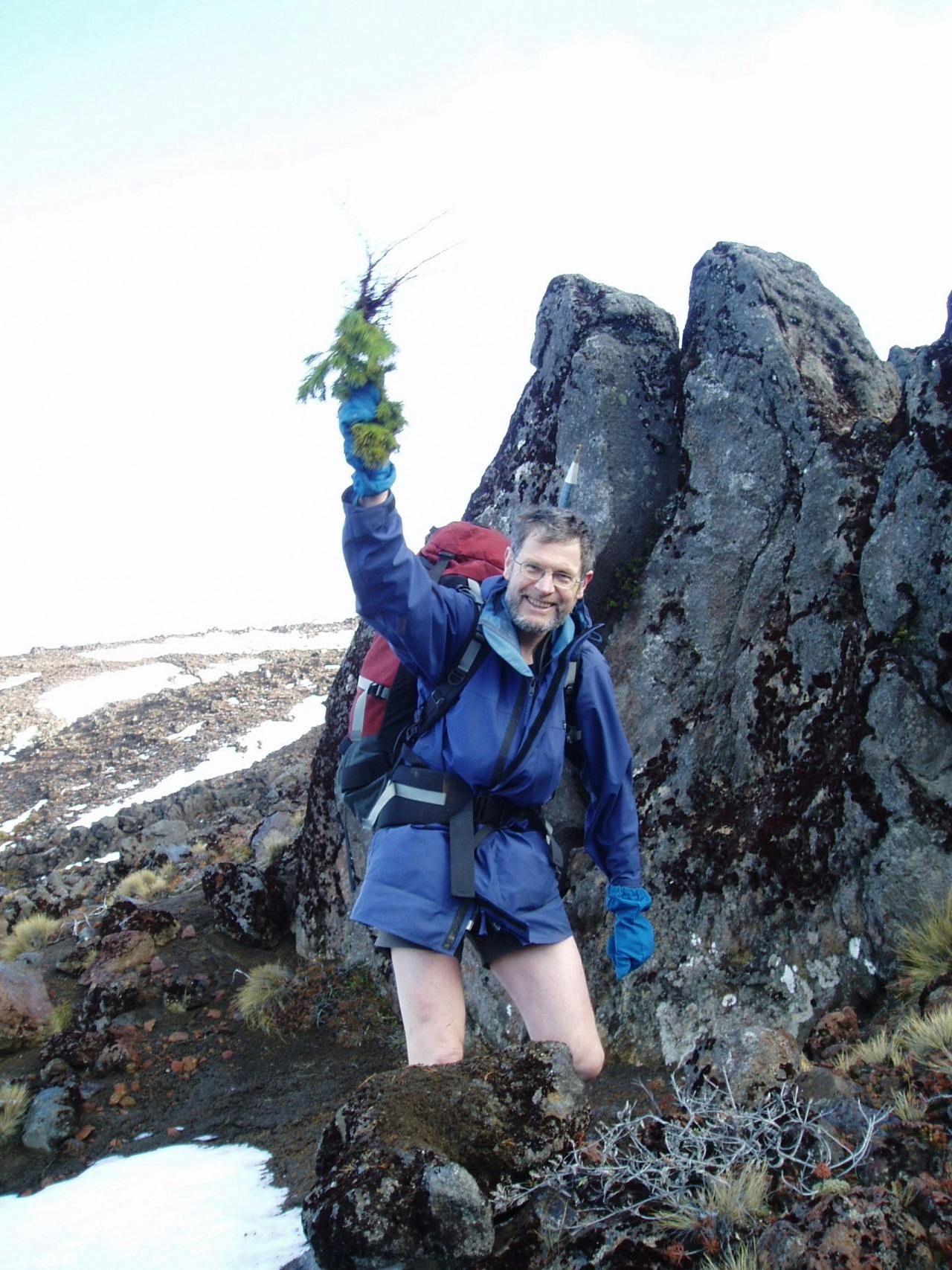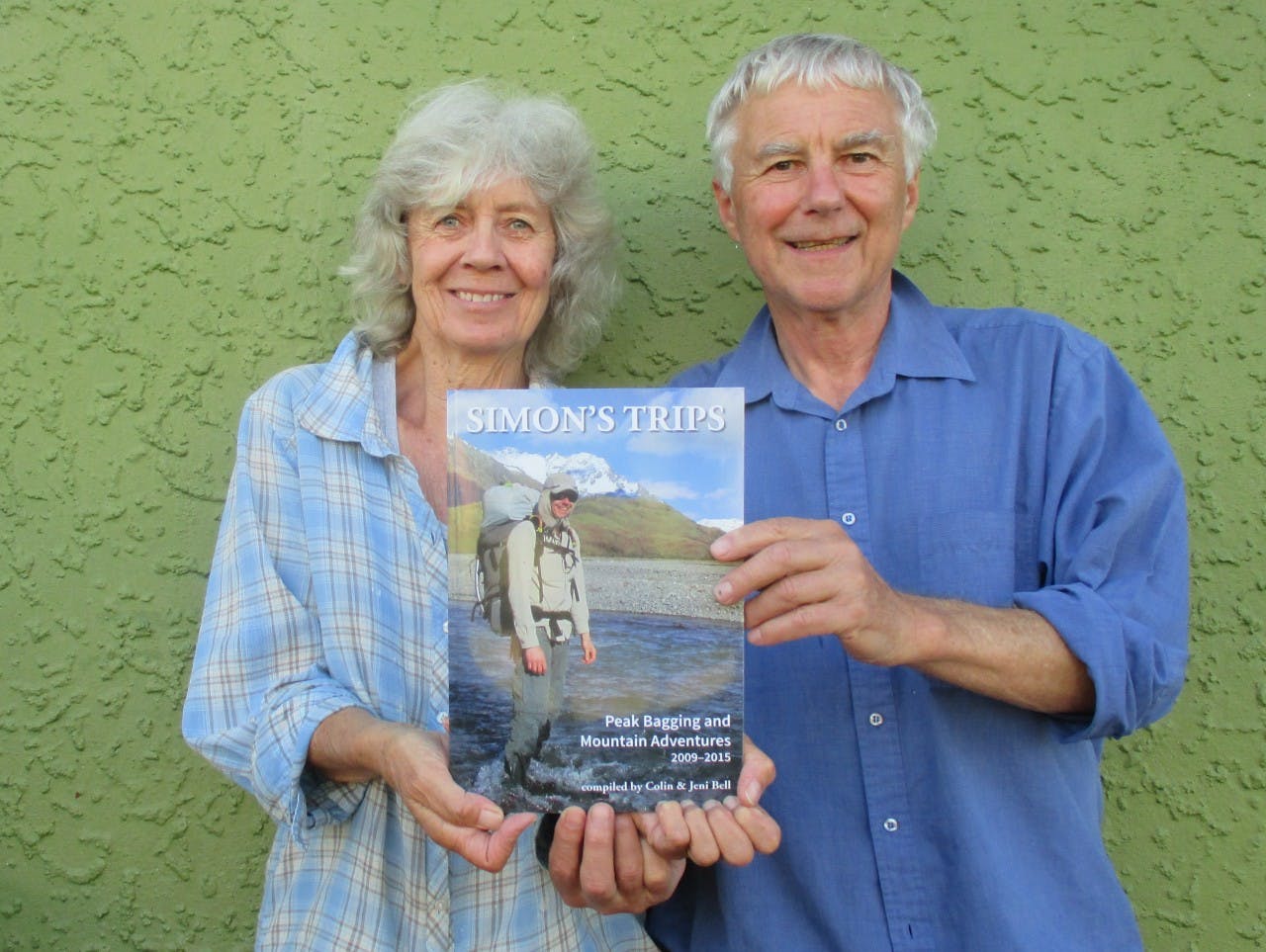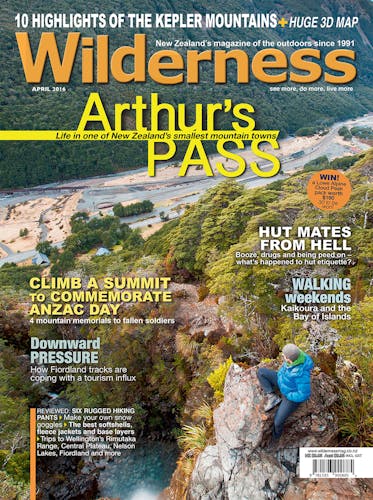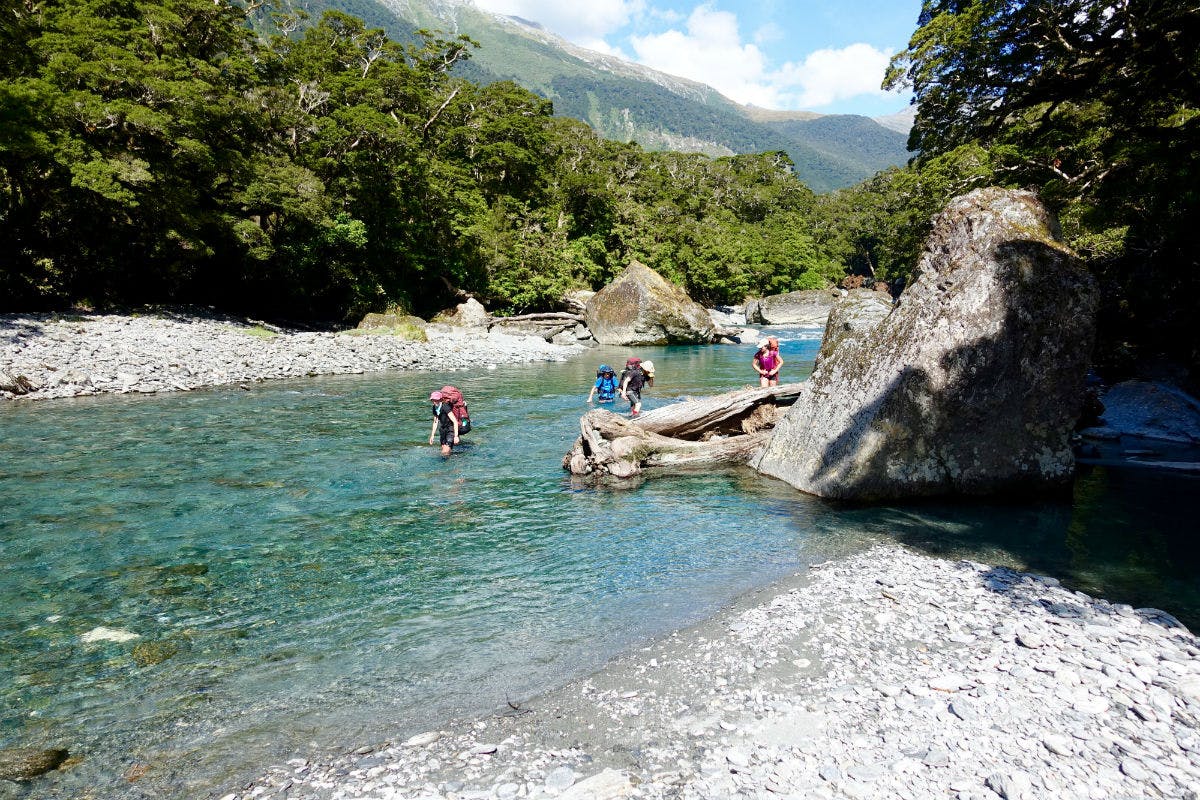Meghan Walker looks at the impact made by philanthropic trampers and mountaineers who have fostered outdoor recreation long after their deaths
Michael Taylor lived for the outdoors. Former president and avid member of the Tararua Tramping Club for more than 30 years, he was described as the ‘prince’ of the club. His death on New Year’s Eve in 2011 sent a wave of shock and sadness through the outdoors community; Taylor fell while scouting a new track on Mt Twilight in Mt Aspiring National Park. He was 60.
Since his death, Taylor’s contribution to the outdoors has lived on. In his will, he left $443,000 to both the Tararua Tramping Club (TTC) and to the Federated Mountain Clubs (FMC), funding which has allowed both organisations to carry out projects such as hut development, mountain safety programmes, guidebooks and youth scholarships.
Taylor was a beloved member of the TTC, and after his death his friends’ memories filled the club’s webpage dedicated to him. “He was a likeable tramping colleague, displaying unfailing qualities of fitness, courage, independence of spirit, sociability, generosity and concern for others, and could be counted on for an informed and considered viewpoint on most matters,” TTC President Peter Barber wrote.
Taylor’s contribution to the club has taken form in diverse and impactful ways, including: commissioning of authors Chris Maclean and Shaun Barnett to write the club’s centennial history, refurbishing clubrooms in Wellington to provide wheelchair access and improved facilities, and establishing a route in the southern Rimutaka Range from South Saddle near Mt Matthews to Kotumu. “With this we want to make an iconic statement about Michael’s life as a tramper and mountaineer,” says Barber. “This route would be a magnet to trampers in the Wellington region.”
FMC, the other major beneficiary of Taylor’s estate, has since increased the scope of its Mountain and Forest Trust’s outreach immensely. “It transformed where the trust was at,” says Owen Cox, executive member of FMC. “We were trying to get a worthwhile sum to have a sustainable source of funding, and it lifted us into the area where we had a reasonable level coming in.” The bequest was particularly important to FMC, as the trust relies solely on donations and bequests to continue programs that promote education, outreach, facility maintenance and safety projects. Much of Taylor’s bequest went into a funding scheme to develop a cash flow for the future, Cox says. “It was a particularly generous thing.”

Michael Taylor gave $443,000 to both the FMC and TTC
Over the past few years, Taylor’s bequest has made up the lion’s share of FMC’s project funding. The operations made possible are diverse: the construction of the Soper Shelter in the Waingaro Valley, the printing of a guidebook on canyoning in New Zealand, a Wilderness Area mapping project, and the establishment of Outdoors Training NZ. The bequest helped with the publication of the book Te Araroa, walking New Zealand’s 3000km trail, and even assisted in the production of a film about the life of New Zealand environmentalist Sheila Natusch. FMC also used the bequest to fund the Youth Scholarship Fund, created in 2010. Twenty groups have now benefited from the scholarship, with expeditions ranging from summiting New Zealand’s highest peaks to retracing the steps of early explorers.
The scholarship, designed for trampers aged 30 and under, aims to promote knowledge and enjoyment of the outdoors, in turn attracting new members to the club. For younger applicants who may lack necessary backcountry knowledge, FMC offers to send a qualified guide on the expedition. The trip must be a multi-day tramp (five or more nights), and must be within mainland New Zealand or its offshore islands.
The most recent scholarship recipient hails from the University of Canterbury. Caroline Bellamy and her friends used the funds to explore dramatic South Westland terrain in February this year, tramping an ambitious 143km in 18 days. Bellamy, along with four other university tramping club members, applied for the scholarship to help cover hut fees, food expenses and transportation costs. She says living on a student budget doesn’t typically allow for missions of this magnitude, so the funds from FMC were crucial to make their trip happen.
Bellamy chose to explore the Mt Aspiring region after a previous three-day traverse over the Tara Tama Range. The rugged and remote landscape beckoned her; she says she was inspired by the challenge of the spectacular terrain. While on their expedition, the group encountered a few hairy moments, with one member airlifted out on day 12 after breaking his ankle following a fall into Cargo Creek. Bellamy also remembers a treacherous descent down Bevans Col on the Bonar Glacier, slipping and sliding down three abseils to the bottom. The whole experience was life-changing, she says, and the support from FMC goes beyond the dollar amount. “It’s good to know they’re getting behind young people, and that alone makes you want to do it.”
FMC says they receive bequests almost every year, which oftentimes are directed at specific projects. Gilbert McCaul left $24,447 to FMC in 2004, and had a very specific request: he asked that the funds be used to improve huts and tracks in the lower North Island. McCaul joined the Hutt Valley Tramping Club in 1946, and was later a member of the Tararua Tramping Club.
Because of McCaul’s bequest, Renata Hut in Tararua Forest Park received mattresses; trampers had previously had to sleep on wooden platforms. Three different huts in Ruahine Forest Park – Crow, McKinnon, and Otukota – have been partially funded to receive covered decks. The former Shamrock Hut in Orongoronga Valley was rebuilt as Papatahi Hut, with 10 bunks instead of the six planned.
Passionate outdoorsman Barry ‘Bazza’ Smith left a bequest to DOC when he died in 2014 in order to replace Creswicke Flat Hut in the Landsborough.
Smith gave $124,000, and friends and family supplemented that with an extra $2000 after his death. Wayne Costello from DOC, Franz Josef, says that particular hut would never have been replaced without the funds from Smith.
Orginally built in 1970, Creswicke is a four-bunk hut used by hunters, trampers, and even kayakers and rafters. They’ve installed a wood stove and a bookshelf, which will be filled with Smith’s old mountaineering books. DOC is commemorating Smith with a plaque, which will be placed inside the hut. DOC hopes the rebuilt hut will encourage more people to venture into remote areas.
For Nelson residents Colin and Jeni Bell, honouring their adventurous son Simon is all about giving back to the outdoors. Simon Bell, 33, went missing in January 2015 while climbing Mt Earnslaw, near Glenorchy. He’d been staying at Esquilant Bivvy Hut, and had presumably gone out for a day trip when he disappeared; his sleeping bag and belongings were found left in the hut. Simon had been on a six-month break from his job as an engineer in Wellington. A confident mountaineer and outdoorsman, he’d previously scaled 65 peaks before taking on Mt Earnslaw.
Shortly after his death, Simon’s parents committed to giving back to the outdoors. “We were aware that our tribute to Simon would in some way recognise his love of mountaineering and make a contribution to mountain safety,” says Colin.

Simon Bell’s parents, Jeni and Colin Bell
The Bells focused their grief into compiling all of Simon’s trip reports from his previous expeditions, along with notes and photographs. After including contributions from friends and a chapter about his wider life, they pieced together a 140-page book titled Simon’s Trips, and gave it to family and friends. They also made copies for Simon’s colleagues in Wellington, and fellow Tararua Tramping Club members.
The Bells didn’t stop there; using Simon’s estate, they collaborated with FMC and made plans to start the Simon Bell Expedition Scholarship, which is similar to the FMC youth scholarship fund, but with no age restriction. Applicants must also choose a specific purpose for their trip; one group set out to remeasure the height of Aoraki/Mt Cook, while another investigated the geology of a remote area. FMC has agreed to administer the scholarship in Simon’s name for 10 years.
Jeni says it felt right to donate her son’s estate to mountain safety projects in order to help others enjoy the outdoors. “We are old time trampers ourselves, love the mountains, and think Simon would have liked this,” she says. “We can feel his spirit with us when we’re in the hills; his friends say the same.”
The Bells are now passionate about mountain safety, and stress the importance of communicating trip plans to family members and in hut books. “This will help Search and Rescue enormously and may save your life,” Jeni says. “And be aware if you die leaving no will and your body is not found, it will be many months or years before any dependents gain access to your estate, insurance money or personal gear left in a storage locker.”
As part of their collaboration, the Bells asked FMC to find new ways to enhance mountain safety. So, FMC will convert the book Safety in the Mountains, originally published in 1937, into an online resource with short instructional video clips, such as how to safely cross a river. The Bells have also made Simon’s Trips available to the broader public, and they send copies to interested readers in return for a donation to the FMC Mountain and Forest Trust.
Colin says these projects have been rewarding ways of honouring Simon’s life: “A very sincere person, he made commitments to his family, his profession and to mountaineering – and he honoured them all.”
And, despite how difficult it’s been losing Simon, they’re remembering him by contributing his estate to what he was most passionate about. “We are very sad, but we have tried to turn it to the good by having a lot of contact with his friends, who have become our friends,” Jeni explains. “We seize the day, we have learned the lesson, and we do as much as we can. It makes life more vivid.”
There’s a limited amount of funding for programmes that help foster knowledge and interest in the outdoors, which makes donations crucial for the continued efforts of clubs like TTC and FMC. Luckily for generations to come, contributions from people such as Taylor, McCaul and Bell help ensure a vibrant future for New Zealand’s outdoor community.








